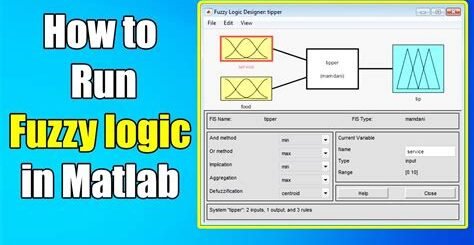Introduction to Neural Networks in Matlab
Neural networks are a powerful tool in the field of artificial intelligence and machine learning. They are designed to mimic the way the human brain works, using interconnected nodes to process and learn from complex data. In this blog post, we will introduce you to the world of neural networks and how to create and train them using MATLAB.
We will start by explaining what a neural network is and how it functions. Then, we will delve into the components that make up a neural network, such as input and output layers, hidden layers, and activation functions. After that, we will walk you through the steps to create a neural network in MATLAB, covering everything from designing the architecture to initializing the weights.
Furthermore, we will explore the process of training a neural network using MATLAB, including defining the loss function, selecting an optimization algorithm, and fine-tuning the model. Finally, we will discuss how to evaluate the performance of a neural network and interpret the results. If you’re interested in diving into the world of neural networks, stay tuned for this comprehensive guide.
What is a Neural Network?
A neural network is a type of artificial intelligence model that is inspired by the way the human brain processes information. It is made up of interconnected nodes, called neurons, that work together to process and analyze complex data. These networks are designed to recognize patterns, make predictions, and perform tasks based on input data. They are used in a wide range of applications, including image and speech recognition, medical diagnosis, financial forecasting, and more.
The basic building block of a neural network is the neuron, which takes in input data, processes it using a set of weights and biases, and produces an output. These neurons are organized into layers – an input layer, one or more hidden layers, and an output layer. The connections between the neurons are represented by weights, which are adjusted during the training process to optimize the network’s performance.
One of the key features of a neural network is its ability to learn from data. Through a process called training, the network is presented with a set of input data and the corresponding correct outputs. It then adjusts its internal parameters to minimize the difference between its predicted outputs and the actual outputs. This process is repeated many times, allowing the network to improve its performance over time.
In conclusion, a neural network is a powerful tool for solving complex problems in the field of artificial intelligence. By simulating the way the human brain processes information, these networks can learn from data, recognize patterns, and make predictions, making them valuable in a wide range of applications.
Components of a Neural Network
A neural network is a system of interconnected nodes, or neurons, that work together to process complex data and produce output. The key components of a neural network include the input layer, hidden layers, and the output layer. The input layer is responsible for receiving the initial data and passing it on to the next layer. The hidden layers are where the processing of the data occurs, and the output layer produces the final results based on the processed information.
Within the hidden layers, each neuron has its own weight and bias values, which are adjusted during the training process to optimize the network’s performance. In addition to these components, a neural network also includes an activation function, which determines the output of each node based on the input it receives.
Another critical component of a neural network is the loss function, which measures the difference between the network’s output and the expected results. This allows the network to adjust its parameters during training in order to minimize the loss and improve its accuracy. Finally, the optimizer is a key component that updates the network’s weights and biases based on the calculated loss, helping the network to converge towards the desired output.
In summary, the components of a neural network work together to process input data, make complex computations, and produce accurate outputs. Understanding these components is essential for designing, training, and evaluating the performance of neural networks in various applications.
Steps to Create a Neural Network in Matlab
Creating a neural network in Matlab involves several steps that must be carefully followed. The first step is to define the network structure, including the number of layers, nodes in each layer, and the type of activation functions to be used. This step is essential as it sets the foundation for the entire network.
Once the structure is defined, the next step is to initialize the weights and biases of the network. This involves assigning random values to the parameters, which will be adjusted during the training process. Proper initialization of weights and biases is crucial for the convergence of the network.
After the initialization, the next step is to specify the training algorithm and parameters. Matlab provides various training algorithms such as backpropagation, Levenberg-Marquardt, and resilient backpropagation. It is important to select an appropriate algorithm based on the problem at hand and fine-tune the parameters for optimal performance.
Finally, the last step is to train the neural network using the specified training algorithm and the training data. This step involves passing the input data through the network, calculating the error, and adjusting the weights and biases to minimize the error. The training process is iterative and may take several epochs to converge to a satisfactory solution.
Training a Neural Network in Matlab
Training a neural network in Matlab involves the use of algorithms to allow the network to learn from input data and improve its performance. The process includes defining the network architecture, preparing the training data, and adjusting the network’s parameters.
One important step in training a neural network in Matlab is specifying the network architecture, including the number of layers, the number of neurons in each layer, and the type of activation function to be used. This can be done using Matlab’s built-in functions for creating and configuring neural networks.
After defining the architecture, the next step is to prepare the training data, which involves dividing the data into input and target sets. The input set is used to train the network, while the target set is used to compare the network’s output with the desired output.
Once the network architecture and training data are prepared, the next step is to adjust the network’s parameters, such as the learning rate, momentum, and the number of training epochs. This is done through the use of algorithms like backpropagation, which update the network’s weights and biases to minimize the error between the network’s output and the target output.
Evaluating the Performance of a Neural Network
When it comes to evaluating the performance of a neural network, there are several key metrics and techniques that can be utilized to assess how well the network is functioning. One of the most common methods for evaluating the performance of a neural network is through the use of a confusion matrix. This matrix allows for a visual representation of the network’s ability to correctly classify input data, and can be used to calculate metrics such as precision, recall, and f1 score.
Another important aspect of evaluating the performance of a neural network is analyzing its learning curves. These curves provide insight into how the network’s loss function and accuracy change over time as the network is being trained. By examining the learning curves, it is possible to identify whether the network is overfitting, underfitting, or performing optimally.
Furthermore, the receiver operating characteristic (ROC) curve is a valuable tool for evaluating the performance of a neural network, particularly in binary classification tasks. The ROC curve visually presents the trade-off between the true positive rate and the false positive rate, providing a comprehensive understanding of the network’s ability to discriminate between classes.
Lastly, it is crucial to cross-validate the performance of a neural network to ensure that its performance metrics are reliable and not influenced by the specific training and testing data. By using techniques such as k-fold cross-validation, the network’s performance can be thoroughly evaluated across multiple sets of data, providing a more comprehensive assessment of its capabilities.


